History feature: understanding the multifaceted lives of ancient Greek women through anti-reproductive practices
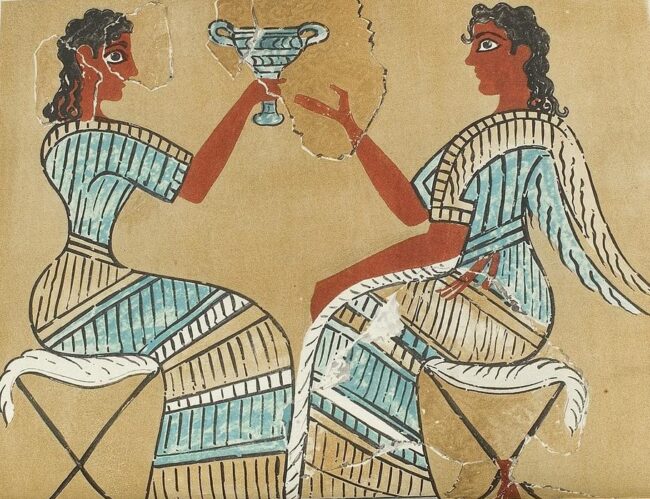
The ancient Greeks are sometimes condensed into a short chapter on Ionic pillars and philosophy in modern histories. However, the truth is radical, complex, and colorful. Exploring anti-reproductive practices of the Ancients and surrounding cultural context will bring to life the experiences of Greek women throughout class and city-state. Three anti-fertility methods to explore are contraception, abortion, and most radically, exposure which quickly becomes infanticide. Throughout history, contraception and abortion are associated with feminism and women’s power via their connection to bodily autonomy. The example of Medusa will be used to help illustrate the rise of patriarchy via parallels in myth to add the context of femininity. The inclusion is an attempt to mitigate the effect of the loss of women’s voices from this narrative that holds them center stage.
Bacharova states that the experiences of women in mythology reflects cultural and personal attitudes and real-life experiences. Negative attitudes such as sexual fear, guilt, and shame are reflected by some women in myth including Io in the tale of Io and the Gorgon (2013). These attitudes are both a symptom of patriarchy and purity culture. Many further examples of real women’s lives will be used to paint a better picture of their experiences. On a brighter note, an all-female festival with bread dough shaped like genitals will indicate freedom’s possibility even under constriction. Attitudes and experiences drawn from myth indicate a real-life parallel of the complex emotional landscape it was to be a woman in ancient Greece. Real life is, and has always been, more complicated than patriarchal orders and overarching societal ideals. For this reason among many, diverse contraceptive practices and alternative sexual morality were a part of everyday life for the ancient Greeks throughout different city-states, though law and dominant patriarchal structures publicly instructed otherwise.

Women in Greek society:
With help from Riley, Marilyn Katz describes a starting point for our understanding of the category of ‘woman’ in classical literature. “‘Women,’ as Denise Riley showed in a now classic text of feminist theory ‘is a volatile collectivity in which female persons can be very differently positioned’ (1988), and ‘being a woman,’ likewise, ‘is a state which fluctuates for the individual, considering what she and/or others consider to characterise it,’” (2000). Defining the role of femininity in ancient Greece is, therefore, neither simple nor easy. It is perhaps easiest to see the different ways society viewed women in the title of Pomeroy’s 1975 work, Goddesses, Whores, Wives, and Slaves. Another woeful blindspot in much of recorded ancient history is that of rural women, who had less money, less options, and often more work. Women in rural ancient Greece worked in fields and their experiences differed from high-class wealthy women or those enslaved in the city – Scheidel called them “The Most Silent Women” (1996.) Katz notes that “the women of ancient Greece and Rome have an all-too-long history constructed around a boring and repetitive hypothesized collectivity,” (2000).
While the individuality of every Greek woman is impossible to encapsulate in one writing (let alone in a text written thousands of years after their deaths), this paper seeks to cast aside the shallow homogeneity in favor of the myriad of individual variation. However, to draw conclusions, assumptions must be made. As a screen of many different colored pixels blurs into common shades, so too might individual historical experiences. Since ‘women’ are not a monolith, the conclusions drawn herein are best understood as broad connecting themes woven into individual tapestries.
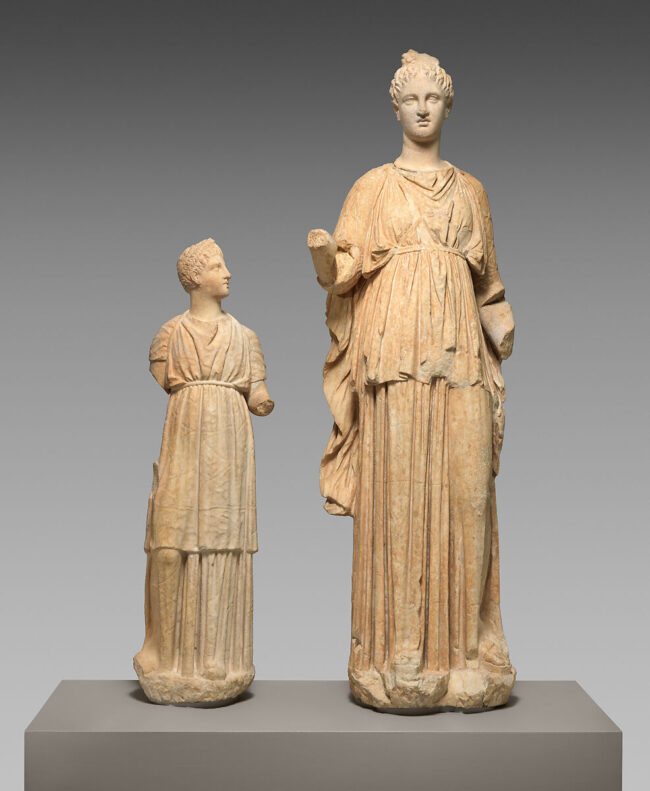
As in most every place in history, class made a difference in experience. Here is an example of class in ancient Grecian male homosexuality: while it was generally viewed as dishonorable to be sexually penetrated by a man, since that would liken one to a woman, slaves could not be dishonored because of their class. This distinction, if measured equally, shows that womanhood is inherently granted less honor than manhood. However, in Sparta, is it notable that while men’s battles were fought more literally, cultural attitudes held childbirth as the women’s battlefield. Higher infant mortality also came with a higher rate of pregnancy complications versus modernity, including death in childbirth. Therefore, mothers were given a certain amount of honor and perhaps respect, though this also depended greatly on both class and the general charitability of one’s husband.
Often, sexual morality was correlated to philosophical Greek ideals of purity and honor. In a text by Lysias, a man argues that he had not only the right but the duty to murder his wife’s lover when he caught them sleeping together. This was according to Athenian law (Lysias, 2001 transl.). State sanctioned murder aside, sexual morality is clearly a paramount Athenian value. However, Roy writes that “while some recent works still suggest that Athenian citizen women did conform to their society’s expectations, and even that women lived in seclusion to promote chastity, others have long recognized that Athenian women showed a wider range of behavior and, sometimes at least, had sexual liaisons with men other than their husbands” (1997). Perhaps unsurprisingly, variance in sexual behavior seems to be a human constant.
Showing further evidence against the idea of an entire class of chaste Athenian women, several feminine religious festivals included “blatant sexual jokes and obscene language and objects,” (Roy, 1997). Even more certainly, then, women were not secluded and sexless as patriarchs might make them out to be. One of these festivals, called the Haloa, was “celebrated by women alone, the women used obscene language, the priestesses recommended that the women take lovers, and on the table at the feast were images of male and female genitals made of dough” (Roy, 1997). So any idea of classical purity, as thought of by the Athenians, was far from an all-encompassing rule. Even so, Athenian husbands tended to want wives they saw as pure.
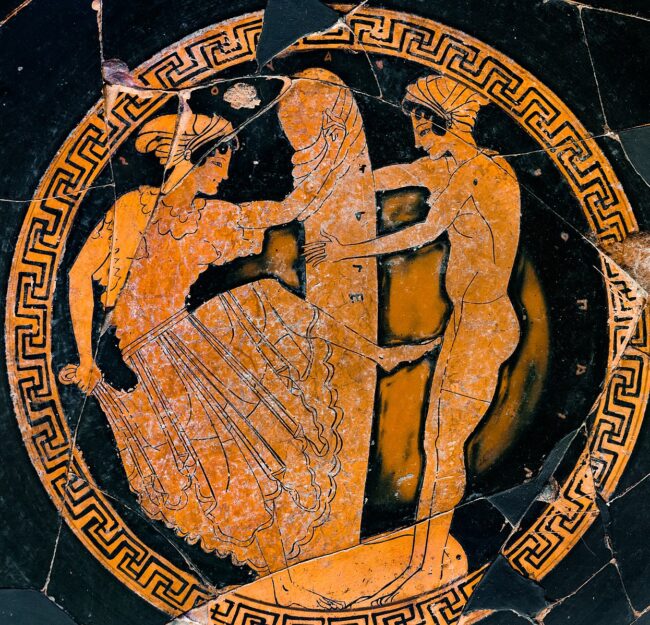
For Greeks, marriage was not seen as an option but rather something political, necessary, and socially expected. Marriage for the purpose of reproduction was seen as a social responsibility. Daughters were given from fathers to husbands. Pomeroy writes that “at the time of betrothal the bride’s father or other guardian declared in the presence of witnesses, ‘I give you my daughter to sow for the purpose of producing legitimate children.’ After the bridegroom agreed, ‘I take her,’ he and his fiancée’s father agreed to the size of her dowry. For respectable girls there was no alternative to marriage, and the obligation to dower each daughter doubtless was a prime motivator in female infanticide,” (2004).
Though marriage was common, it was not always as monogamous as expected. Though extensive legal and social penalties existed for adulterers, it is reasonable to doubt that the penalties faced would actually occur. There was one example of a law in Solon that allowed a male authority figure to sell a daughter, brother, or sister into slavery if he caught them in “fornication” with someone unapproved. However, the author goes on to state that no known example of this has been recorded. Divorce was allowed, and not uncommon across Greece. It also did not hold the stigma gained in later centuries. On adultery, “the penalty for a husband who failed to divorce an adulterous wife was very severe, but it could be imposed only if another citizen brought a lawsuit and proved that the husband was aware of his wife’s adultery” (Roy, 1997). In other words, a bystander could sue a husband for failing to divorce his cheating wife.
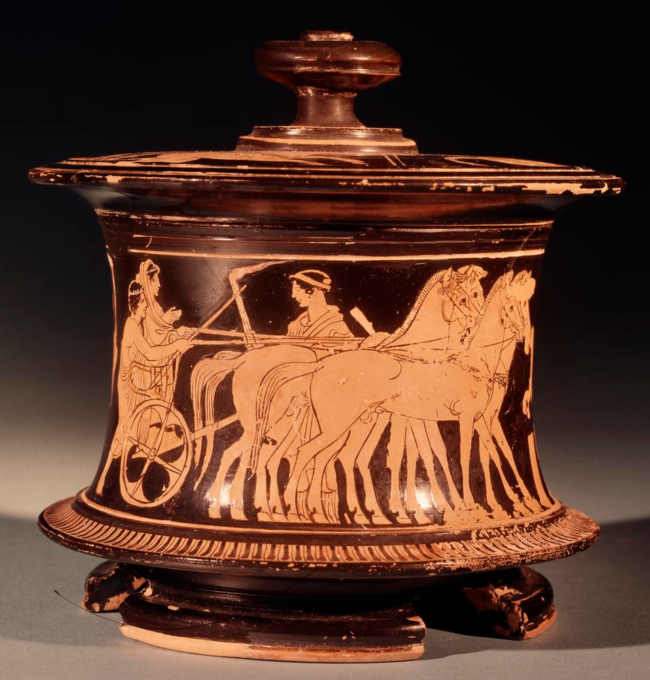
This marital roundabout may lend credence to the thought that women were viewed as less than men. What if the genders were reversed? In myth, the exploration deepens. Reflections of reality in myth may be as old as the human experience. According to Meehan, “gendered relationships as portrayed in myth would not [be] effective if they were not also a fact of life,” (2017). With Pandora, Aphrodite, and Helen of Troy as examples, Meehan argues “the depiction of women in Greek mythology perpetuated their treatment in society as elite men used these legends as instructions detailing the correct way to deal with their female counterparts,” (2017).
Tracing the evolution of Medusa can provide a kind of timeline to the stripping of feminine power in favor of patriarchal control. In earlier societies a powerful snake goddess, Medusa is reduced to a terrifying symbol of the female gaze (Bowers, 1990). Some have connected Medusa to symbols of empowered female sexuality, which a fragile masculinity is often fearful of. Bowers says that “Medusa is charged with a profound sensuality and physicality that cannot be purged from her matriarchal origins” (1990). Patriarchal men had to make Medusa weaker to take down her power as a symbol. This was done in myth by first reducing her from a goddess to a beautiful woman, then through violence. After Medusa is assaulted by Poseidon in Athena’s temple, instead of empathy, Athena provides punishment. She turns Medusa’s hair to snakes and makes her into a monster that petrifies. After repeated cruelties, Medusa is still powerful.
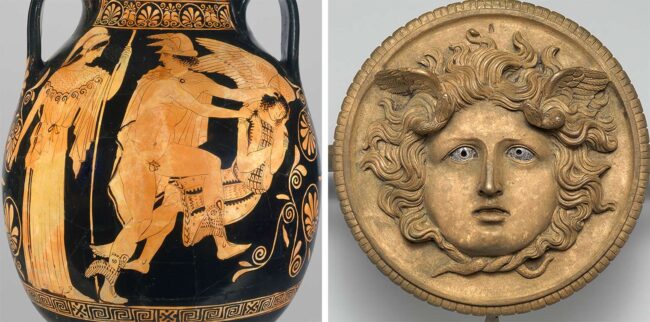
Before the Greeks, “Medusa was a powerful goddess at a time when female authority was dominant and the power to be feared was feminine. As the serpent-goddess of the Libyan Amazons, for example, Medusa represented women’s wisdom. A female face surrounded by serpent-hair was an ancient, widely-recognized symbol of divine, female wisdom,” Bowers wrote (1990). Joseph Cambell writes in 1964 that Medusa’s murder by Perseus is exemplary of the same goddess-wrecking story always told by western imperialism: “wherever the Greeks came, in every valley, every isle, and every cove, there was a local manifestation of the goddess-mother.”
Elsewhere in Greek myth, the power of beautiful women is highlighted where female eros is described as dangerous. “In the Romance of the Rose, for example, Perseus arms himself ‘with the mirror of reason to resist the dangerously feminine, to neutralize the erotic power that threatens to immobilize him,’” (Bowers, 1990). And of course, the beauty of Helen of Troy is enough to start a war.

The Olympian Medusa first surfaces as a Gorgon in the eighth century BC, but does not gain petrifying powers until the second century BC. The more familiar version of Medusa with snakes-as-hair became widespread in the first century BC, about 200 years before Rome conquered Greece at Corinth. (Bowers, 1990). This morphing of the mother goddess directly parallels the loss of feminine cultural power at the hands of western civilization.
Texts like Oeconomicus or Homer’s epics contain “themes of patriarchy and male domination that are hard to miss: men were in charge; women were always subordinate to their male counterparts,” (Meehan, 2017). Golden estimates that as many as 10 percent of Athenian female babies were exposed, so between patriarchal themes that deem women inherently less valuable as well as the cost of a dowry, a female baby was in danger (1981). Even as accurate numbers regarding exposure and infant mortality are difficult (if not impossible) to obtain, there is no estimate that would indicate a safe amount. Posidippus, a Greek comic from the third-century BC, wrote the following, intended as humor: ‘one rears a son even if one be poor, but exposes a daughter even if one be rich’ (Kock, 1880).
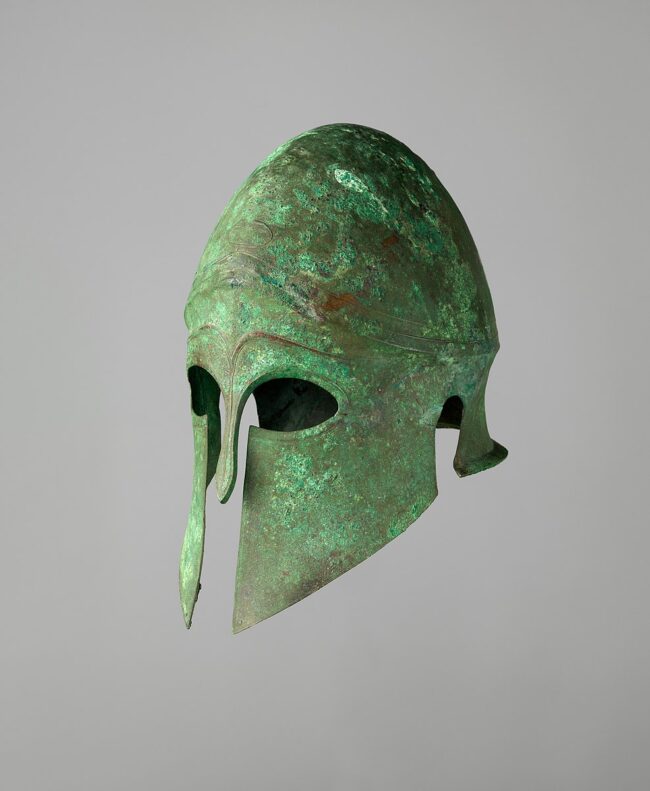
However looming the societal attitudes of men’s perceived superiority, women still lived their lives. The assertion by Pomeroy et al. that control over fertility signified high status for women in Sparta challenges the notion of uniform patriarchal dominance (2004). Additional supporting evidence for women’s freedom in Sparta is detailed by Pomeroy. “A woman could inherit all her father’s land, and many women became extremely wealthy by this means. Thus Aristotle’s statement that in his day women owned two-fifths of the land of Sparta is credible,” (2004). The contrasting perspectives on Athenian women’s behavior, including instances of sexual liaisons and festivals with explicit content, further undermine societal control of gendered norms (Roy, 1997).
Perhaps easier to access than contraceptives was non-procreative sex. There were as many ways as can currently be imagined to engage sexually without producing a pregnancy. Also, male and female homosexuality both had their place in life. Certainly, in Sparta, married couples under 30 did not spend much more time together than it took to create a child. While groups of young men (soldiers) lived and ate together, Spartan women had a degree of independence that their Athenian counterparts did not see. Spartan men’s devotion to their military has been explained in part by the deep bonds created through queer sexuality (Hanson, 2009). Brides in Sparta cut their hair short and dressed as boys. “In Sparta […] the cropping of the bride’s hair and transvestism likely aimed to transform her temporarily into an adolescent Spartan boy – a less threatening figure to the groom, who probably had made his own transition to adulthood via a close emotional and sexual relationship with an older male and was now in the position to sexually initiate other boys into Spartan society,” (Millender, 2017). Much of recorded Greek homosexuality had to do with pederasty, this sexual initiation into society that was like a ‘mentorship with benefits.’ The older man would assume an active (penetrative) role and the younger man or boy would assume the receiving role, which was linked to passivity, femininity, and youth in the cultural context. Relationships between two equal adults are less documented, but certainly existed. In total, a great deal more is written of male homosexuality. Of ancient Greek lesbian partnerships, however, KJ Dover writes in Greek Homosexuality that classical Athenian literature refers only once to female homosexuality (in Plato, Symposium, 191e.) (1978).
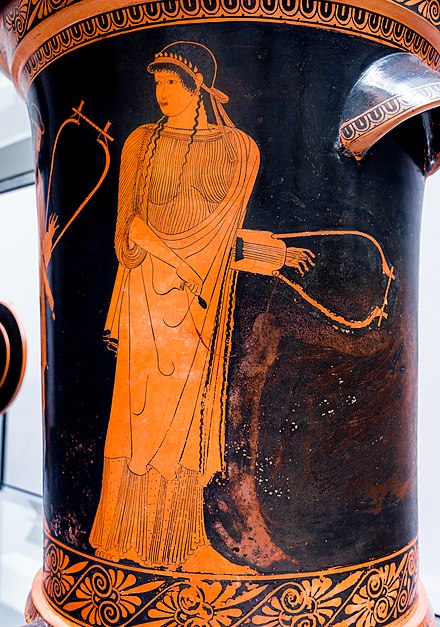
Even so, Sappho is the Archaic Greek Poet from the isle of Lesbos, from which lesbianism is named. One line of her poetry is particularly evocative, “Sweet mother, I cannot weave – slender Aphrodite has overcome me with longing for a girl,” (Sappho, 2014, Rayor transl.). Sometimes this is translated instead as “longing for a boy,” which is also acceptable because the word Sappho used is ambiguously gendered and means ‘youth’ most accurately. Her sexuality has been the subject of debate since at least the third or second century BC, written on a papyrus: “accused by some of being irregular in her ways and a woman-lover,” (Campbell, 1982). Even without absolute certainty of Sappho’s desires, it has generally stood to reason that history has been written by the dominant culture. These are the understood facts: in any patriarchal society, historical lesbian erasure would be unsurprising, and when lesbians have sex, there is not usually a child.
It is crucial to note that the ancient Greek understanding of the science of conception was rather poor. “They thought that it occurred after sexual union at a time when the male seed began to grow. Indeed, many of the ancients did not believe that the female possessed a ‘seed.’ Employing an agricultural analogy, they asserted that the female supplied only nourishment, and that the male seed could live within the female for several days before conception took place,” (Riddle, 1992). This meant that many methods were useless, leaving the ancients up to an irregular trial and error to figure out what worked and what did not.
From a social perspective, even though it would have been against the consensus of respectable womanhood, not every woman wanted children. Euripides had Medea say that she would “rather take up a position beside [her] shield three times than give birth once,” (Medea, 2013). This patriarchy that defined an ideal woman as chaste creates a variety of stigmas and sexual shame. Fear of marriage, childbirth, or sex were factors that would have been present in the population as well (Bachvarova, 2001). Since marriage was required and husbands often wanted children, if a wife refused to give birth there were options that could be had in secret.
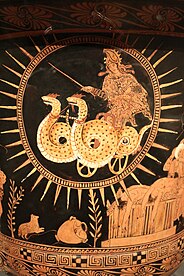
Backyard birth control:
Some of the earliest references to contraception are in the Corpus of Hippocrates and by Aristotle. Herbal and spiritual methods were more often mentioned than physical ones, but it can be assumed that physical ones were commonplace. One particularly favored herb was Silphion, a plant in the Ferula family. Riddle writes that it “probably worked. Recent experiments with rodents have shown that extracts taken from some of silphion’s surviving relatives can inhibit conception or prevent the implantation of a fertilized egg. Since ancient writers described silphion as far more effective than the other species in its family, perhaps it is not surprising that it was driven to extinction,” (1992). Silphion was Cyrene’s principal export, and “its connection to reproduction is suggested by the iconography used on the Cyrenian four-drachma coin: A seated woman’s left hand points to her genital area, and her right hand touches a silphion plant. Other Cyrenian coins carried only the image of the now-extinct silphion plant,” Riddle wrote.
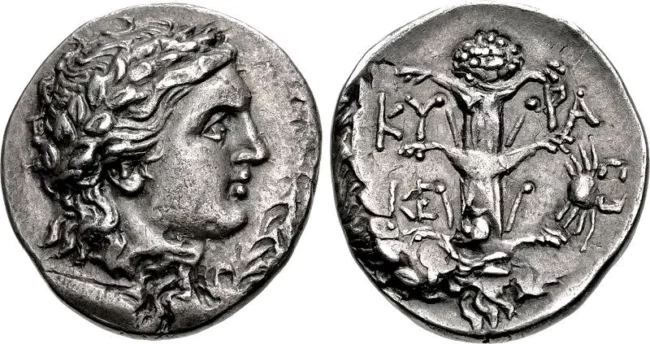
Myrrh is also mentioned by Riddle, but its efficacy is uncertain. Ovid recounted its name after Myrrha, the daughter of a legendary but evil king. Pennyroyal as a contraceptive is mentioned semi-frequently, and this may be due to the fact that it worked. The plant “plays a role in Aristophanes’ play Peace, first produced in Athens in 421 b.c.e.. Trigaius is in need of a female consort. The god Hermes provides him with Harvesthome. Trigaius says to her: ‘Come here and let me kiss you, – but, Hermes, won’t it hurt me if I make too free with fruits of Harvesthome at first?’ Hermes replies: ‘Not if you add a dose of pennyroyal,’” (Riddle, 1992).
Of general herbal efficacy, Riddle has this to say: “Placebo and psychological effects are bound to be common in experiments with herbal medicines, but in the prevention of pregnancy they work only one way. A woman who takes a potion to prevent conception cannot be sure that it did the trick, but a full-term pregnancy is a sure sign that it doesn’t work,” (1992). The least effective methods of all were spiritual efforts to prevent pregnancy; astrology was not going to be as effective as some other methods.

“The condom and the diaphragm are relatively modern inventions, although experiments with barrier devices and vaginal suppositories began deep in antiquity,” writes Riddle (1992). Pomeroy states that Spartans had a variety of options, including vaginal plugs of wads of wool soaked in honey (2004).
On physical methods, Eyben calls it “rather surprising that coitus interruptus is so rarely referred to. This obvious method is not so self-evident as would seem at first glance. In several cultures it is unknown, even where other forms of birth control are practiced. Still, the almost complete silence of our sources may well be due to the fact that this practice – already known in the Jewish world – was too familiar to require much description,” (1980). In addition, the rhythm method of tracking fertile days was used, but could not have been very effective because of the misconception that a woman’s most fertile days were right after menstruation. Despite a lack of comprehensive understanding, the use of various methods suggests a concerted effort to exercise control over reproductive outcomes (Pomeroy, 2004).
Exposure and abortion were more often written about than contraception, so may be included in more detail. More may have been written as a result of their more controversial nature, so their increased presence in literature does not indicate that they were more often used than contraception.
Aristotle states that abortion is lawful to practice before a fetus “has developed sensation and life. For the line between lawful and unlawful abortion will be marked by having sensation and being alive,” (Politics 7.14.10, 1335b, Loeb transl.). This statement indeed creates an impression of intellectual depth, but is difficult if not entirely impossible to enforce in practice. Especially without any modern tools, the exact mark of ‘sensation and life’ is next to impossible to determine. Modern pro- and anti- abortion rights activists engage in a similar debate and have yet to reach a conclusive answer.

Centuries later, “a theorist like Soranus carefully distinguished contraception from abortion; in practice, however, there was considerable confusion and one was often hard put to differentiate between devices that prevented conception and those that terminated it.” (Eyben, 1980) These blurred lines between contraception and abortion, as noted by Eyben, both complicate the categorization of these practices and underscore challenges in historical interpretation (1980). Soranus’ work was some of the only accurate gynecology, comparable with nineteenth century medicine. He did not practice until the 1st century AD, however, and most notably in Alexandria, Egypt. One of his contraceptive recipes was a “mixture in wine of wallflower seeds, myrtles, myrrh, and white pepper to be taken for three days,” (Soranus, Gyn. I, 1927 transl.).
In the Homeric Hymn to Demeter, Demeter asks Metaneira to mix an elixir of barley and water with pennyroyal, then Metaneira gives this to Demeter to drink (1974, Richardson transl.). This potion was called kykeon and had greater spiritual significance via the Eleusinian Mysteries, initiation ceremonies honoring Demeter and Persephone. “Initiates drank kykeon following a day of ritual fasting,” (Nelson, 2009). As Nelson points out, “pennyroyal may have been perceived by some in antiquity as having anti-fertility properties not only in females but also in males,” with another possibility being that the male reproductive system is in some way affected by pennyroyal.
Methods used to cause abortions were most often herbal or physical, but occasionally surgical as well. Soranus disavowed the practice of ancient abortion via sharp object. “Some techniques or prescriptions were detrimental to the health and might even endanger the life of the mother. The number of women who failed to survive an abortion must have been great,” writes Eyben (1980). The method was, as expected, often applied by sex workers, yet the wealthy were also “prime customers” especially to cover up the evidence of adultery. There is one upside of practicing exposure: the mother’s life would not be in mortal danger.
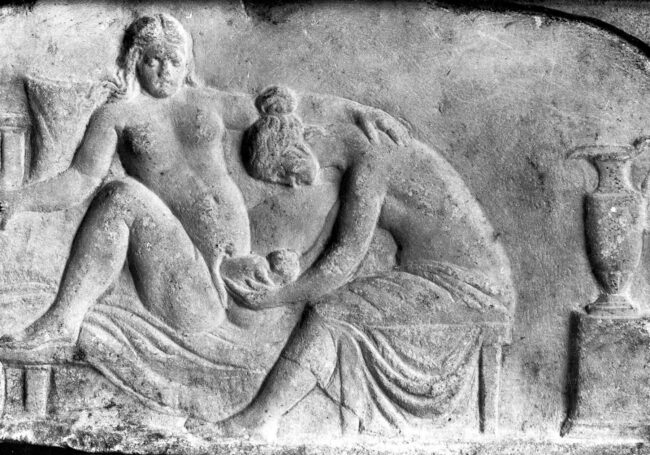
Exposure:
A host of information is available about ancient exposure, which is often but not always synonymous with infanticide. Middleton writes that “not all infants that were exposed died or were intended to be killed directly – the choice of where to leave a new baby and whether to leave any items with it would affect its chances either way.” If a child was indeed found and taken in, its chances of survival were much better, but it could still be sold into slavery. If the unfortunate infant was not taken in, it might succumb to hunger, cold, or worse, wild animals. Exposure was not a first choice, but rather more likely a dire circumstance where parents felt they had no other option. As such, it may have been more common when times were hard.
Pomeroy addresses exposure in the city-states. “As boys grew up, their labor was considered valuable. Moreover, they were expected to support their aged parents, bury them, and look after their tombs. Parents placed less value on girls, who lacked earning power and whose children would belong to a different family. Though the eldest child was normally raised regardless of its sex, some historians have conjectured that as many as 20 percent of newborn Athenian girls were abandoned in places like the local garbage dump. Slave dealers collected a few of the exposed infants and turned them over to wet nurses to be raised and sold as slaves. Most exposed infants, however, died, and exposure quickly became infanticide,” (2004). Meeting a good fate after being exposed would take an extraordinary stroke of luck and was usually not the case.

Since the infant mortality rate of ancient Greece was already “appallingly high,” one might ask why parents would consider exposure (Eyben, 1980). There were a variety of factors, including poverty and famine. Middleton writes that “deformity, sickliness, or weakness could be reasons for the exposure of a baby rather than its acceptance into the family,” (2023.) He then references Soranus’ eight points:
“1) the mother should be healthy 2) the baby should be full-term 3) it should cry with vigor 4) it should be ‘perfect’ in all its parts 5) its ‘ducts’ must be free of obstruction 6) the natural functions of every member should be neither sluggish nor weak 7) the joints must bend and stretch 8) it should have the right size and shape and be properly sensitive to stimulus,” (1927).
Language is another component that shows how the Greeks viewed the practice of exposure or “setting out.” The Greeks had different words for exposure, including different forms of ektithêmi, then they did for “child-murder,” paidoktoneô (Patterson, 1985). In addition, the terminology for a newborn and a fetus (brephos) was sometimes interchangeable, indicating that the Greeks did not necessarily draw a hard line between the two. A passive infanticide in the first few days of life was not the same thing as killing a named and recognized family member (oikos). Patterson writes that “when a form of paidoktoneo is used to refer to the killing or ‘exposing’ of a newborn, it is with clear polemical and dramatic intent,” (1985). In other words, though exposure was common enough, sometimes words were used specifically to cast an exposer in a negative light. Aristotle emphasized the higher risk of death in the first days of an infant’s life. The first week, particularly, “were recognized as critical to its survival” (Patterson, 1985). By the tenth day, the family had an idea of whether or not the child would survive.
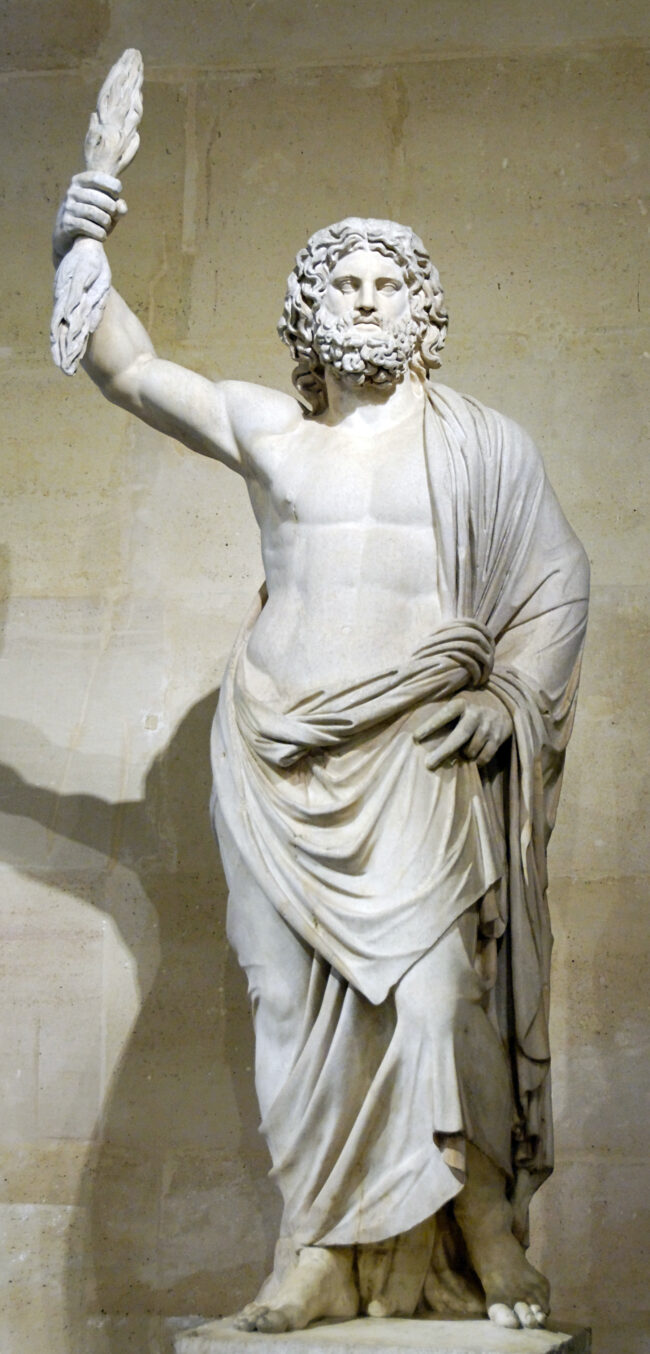
Altogether, this exploration of anti-reproductive practices among the ancient Greeks provides a nuanced and complex understanding of the experiences of women in various social classes and city-states. The depiction of Greek women, as Denise Riley suggested, is a volatile collective with diverse positions and experiences. While Athenian society imposed strict expectations on women, the situation in Sparta challenges the notion of uniform patriarchal dominance, with women having greater potential for wealth and autonomy. The portrayal of powerful female figures in Greek mythology reflected the societal shift towards patriarchal control. Through a careful examination of Medusa’s mythological narrative, this paper has attempted to uncover the parallel between mythology and real-life experiences, showcasing the intricate emotional landscape faced by Greek women.
Exploring the various contraceptive methods used by the ancient Greeks, from herbal remedies to barrier devices, reveals a society actively engaged in controlling reproductive outcomes. The blurred lines between contraception and abortion, as well as the societal challenges in categorizing these practices, demonstrate the complexities of historical interpretation. Finally, exposure, often synonymous with infanticide, provides insight into the harsh realities faced by Greek parents who had no other choice. This exploration of anti-reproductive practices in the poleis offers a richer and more nuanced understanding of women’s lives, challenging stereotypes and highlighting the diversity of experiences within this ancient civilization. The complexities of gender, class, mythology, and reproductive practices contribute to a more complete view of the intricate tapestry that was the life of a woman in ancient Greece. Diverse sexual behavior and the solutions that entailed were a part of everyday life because the ancient Greeks were bound by reality as a human, no matter what a patriarchal philosophy might otherwise suggest.
References
- Aelian (1665). Varia Historia (Thomas Stanley, Trans.)
http://penelope.uchicago.edu/aelian/ (Original work published 1st or 2nd century AD)
- Aristotle. (1905). Aristotle’s Politics. Oxford: Clarendon Press.
- Includes examples of reproductive politics in Ancient Greece.
- Bachvarova, M. R. (2013). Io and the Gorgon: Ancient Greek Medical and Mythical Constructions of the Interaction Between Women’s Experiences of Sex and Birth. Arethusa, 46(3), 415–446. https://www.jstor.org/stable/26322509
- Bowers, Susan R. (1990). Medusa and the Female Gaze. NWSA Journal, 2(2),
217–235. http://www.jstor.org/stable/4316018
- Campbell, D. A. (1982). Greek lyric. Harvard University Press ; London.
- Campbell, Joseph (1964) Occidental Mythology. New York ;Viking Press,
- Dover, Kenneth James. (1978). Greek Homosexuality. Bloomsbury Academic.
- Euripides & Rayor, D. J. (2013). Euripides’ Medea: A new translation. Cambridge University Press.
- Eyben, E. (1980). FAMILY PLANNING IN GRAECO-ROMAN ANTIQUITY. Ancient
Society, 11/12, 5–82. http://www.jstor.org/stable/44080042
- Golden, M. (1981). Demography and the Exposure of Girls at Athens. Phoenix, 35(4), 316–331. https://doi.org/10.2307/1087926
- Hanson, V. D. & Keegan, J. (2009). The Western way of war : infantry battle in Classical Greece. University Of California Press.
- Homer, & Richardson, N. J. (1974). The Homeric hymn to Demeter. Clarendon Press.
- Katz, M. A. (2000). Sappho and Her Sisters: Women in Ancient Greece. Signs, 25(2), 505–531. http://www.jstor.org/stable/3175564
- Kock, T. (1880). Comicorum atticorum fragmenta (Vol. III). Lipsiae B.G. Teubneri. https://archive.org/details/comicorumatticor03kockuoft/page/342/mode/2up
- Lysias, (2001). Lysias I (Caroline Faulkner, Trans.) https://www.yorku.ca/pswarney/Texts/lysias_1.htm (translation is based on the Oxford Classical Text (1982), edited by C. Hude. Originally published in antiquity.)
- Aelian (1665). Varia Historia (Thomas Stanley, Trans.)
http://penelope.uchicago.edu/aelian/ (Original work published 1st or 2nd century AD)
- Meehan, Dessa (2017) “Containing the Kalon Kakon: The Portrayal of Women in Ancient Greek Mythology,”Armstrong Undergraduate Journal of History: Vol. 7 : Iss. 2 , Article 2
- Middleton, G. (2023). Introduction: Approaching Women in Prehistory and History. In Women in the Ancient Mediterranean World: From the Palaeolithic to the Byzantines (pp. 1-22). Cambridge: Cambridge University Press. doi:10.1017/9781108646529.002
- Millender, E. G. (2017). Spartan Women. A Companion to Sparta, 1, 500–524. https://doi.org/10.1002/9781119072379.ch19
- Nelson, S. E. (2009). “Persephone’s Seeds: Abortifacients and Contraceptives in Ancient Greek Medicine and Their Recent Scientific Appraisal.” Pharmacy in History, 51(2), 57–69. http://www.jstor.org/stable/41112420
- Patterson, C. (1985). “Not Worth the Rearing”: The Causes of Infant Exposure in Ancient Greece. Transactions of the American Philological Association (1974-), 115, 103–123. https://doi.org/10.2307/284192
- Plato., & Cornford, F. M. (1957). Plato’s theory of knowledge: the Theaetetus and the Sophist of Plato. New York, Liberal Arts Press.
- Pomeroy, S. B., Donlan, W., Burstein, S. M., & Roberts, J. T. (2004). A Brief History of Ancient Greece: Politics, Society, and Culture (1st ed.). Oxford University Press.
- Riddle, J. M. (1991). Oral Contraceptives and Early-Term Abortifacients during Classical Antiquity and the Middle Ages. Past & Present, 132, 3–32. http://www.jstor.org/stable/650819
- Riley, Denise. 1988. ‘Am I That Name?” Feminism and the Category of ‘Women” in
History. Minneapolis: University of Minnesota Press.
- Roy, J. (1997). An Alternative Sexual Morality for Classical Athenians. Greece & Rome,
44(1), 11–22. http://www.jstor.org/stable/643143
- Sappho, Rayor, D. J., & A P M H Lardinois. (2014). Sappho : a new translation of the complete works. Cambridge University Press.
- Scheidel, W. (1996). The Most Silent Women of Greece and Rome: Rural Labour and Women’s Life in the Ancient World (II). Greece & Rome, 43(1), 1–10. https://www.jstor.org/stable/643080?searchText=childbirth+in+ancient+greece&searchUri=%2Faction%2FdoBasicSearch%3FQuery%3Dchildbirth%2Bin%2Bancient%2Bgreece&ab_segments=0%2Fbasic_search_gsv2%2Fcontrol&refreqid=fastly-default%3A030ebf92356ee7a923d04d6d74bfd41e
- Sophocles. (1960). Oedipus rex. [Place of publication not identified], Folkways Records.
- Soranus, (1927) Gynecology I, (Johannes Ilberg, Trans.)
- Van Hook, L. R. (1920). The Exposure of Infants at Athens. Transactions and Proceedings of the American Philological Association, 51, 134–145. https://doi.org/10.2307/282876

